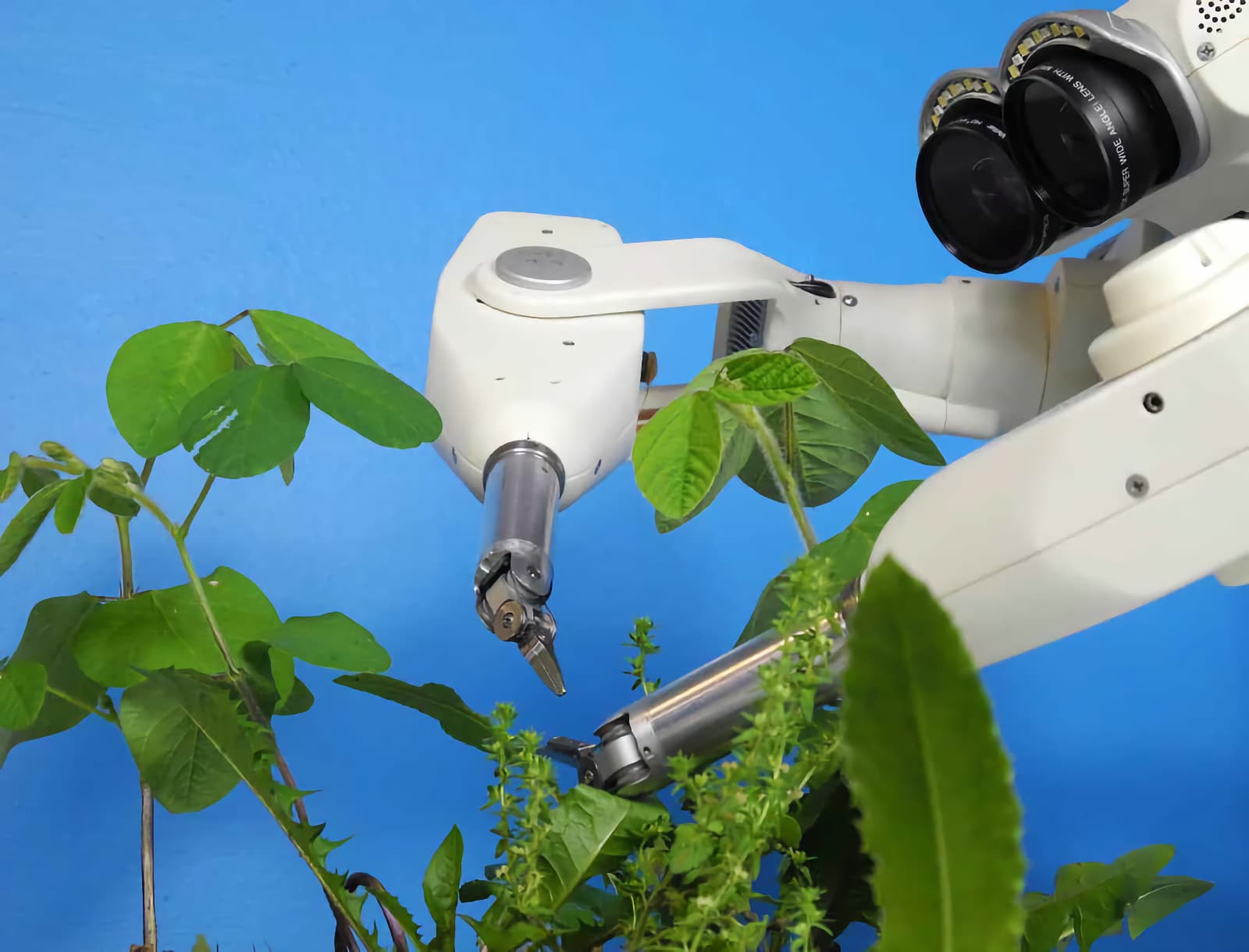Downloads
DOI:
10.31182/cubic.2022.5.55Keywords:
critical gardening, computer vision, artificial intelligence, weeds, future naturesAbstract
Teach a robot to pull a weed. What sounds like a straightforward task comprises an intricate set of actions and complicated ideas of nature. Translating a culturally-defined, ambiguous object (‘a weed’) into successful machine code directions requires human-machine negotiation and reveals emerging nature-technology relationships. The field guide provided here contains instructions for a Taurus dexterous robot, commonly employed in tele-surgery and roadside bomb diffusion. The soybean plant, also addressed in the code and images, is an intentional choice based on the combination of agro-environmental, technological and political issues involved in its cultivation globally. As an artistic experiment based on existing technologies, this visual and prose-based algorithmic narrative asks readers to think about how culture and politics are embedded in computer code, and how both algorithms and data structures may manifest themselves in future environmental and agricultural realities.
How to Cite
Published
Issue
Section
References
Cresswell, Tim. “Weeds, Plagues and Bodily Secretions: A Geographical Interpretation of Metaphors of Displacement.” In Annals of the Association of American Geographers , Vol. 87, No. 02 (1997): pp. 330–347. DOI: https://doi.org/10.1111/0004-5608.872056
Dourish, Paul. “Algorithms and their others: Algorithmic culture in context.” In Big Data & Society , July–December 2016: pp. 1–11. DOI: https://doi.org/10.1177/2053951716665128
Dunne, Anthony, and Fiona Raby. Speculative Everything: Design, Fiction, and Social Dreaming . Boston, MA: MIT Press, 2013.
"Soybean Car", The Henry Ford, accessed 13 November 2020, https://www.thehenryford.org/collections-and-research/digital-resources/popular-topics/soy-bean-car
Kimmerer, Robin Wall. Braiding Sweetgrass: Indigenous Wisdom, Scientific Knowledge and the Teachings of Plants . Minneapolis, MN: Milkweed, 2013.
Mukerji, Chandra. Territorial Ambitions and the Gardens of Versailles . Cambridge, MA: Cambridge University Press, 1997.
Pollan, Michael. “Farmer in Chief.” In The New York Times Magazine (9 October 2008), https://www.nytimes.com/2008/10/12/magazine/12policy-t.html.
Rhee, Jennifer. The Robotic Imaginary . Minneapolis, MN: University of Minnesota Press, 2018.
Shurtleff, William, and Akiko Aoyagi. "Henry Ford and His Employees: Work with Soy". Lafayette, CA: Soyfoods Center, 2004, accessed 13 November 2020, https://www.soyinfocenter.com/HSS/henry_ford_and_employees.php
"Taurus Dexterous Robot", SRI International, accessed 16 August 2020, https://archive.sri.com/engage/products-solutions/taurus-dexterous-robot "Herbicide with the Work Ethic of a Machine", Syngenta United States, accessed 13 November 2020, https://www.syngenta-us.com/herbicides/halex-gt
Turkle, Sherry. Evocative Objects – Things We Think With. Cambridge, MA: MIT Press, 2007.
Weinberger, Lois. The Mobile Garden . Bologna: Damiani Editore, 2009.


